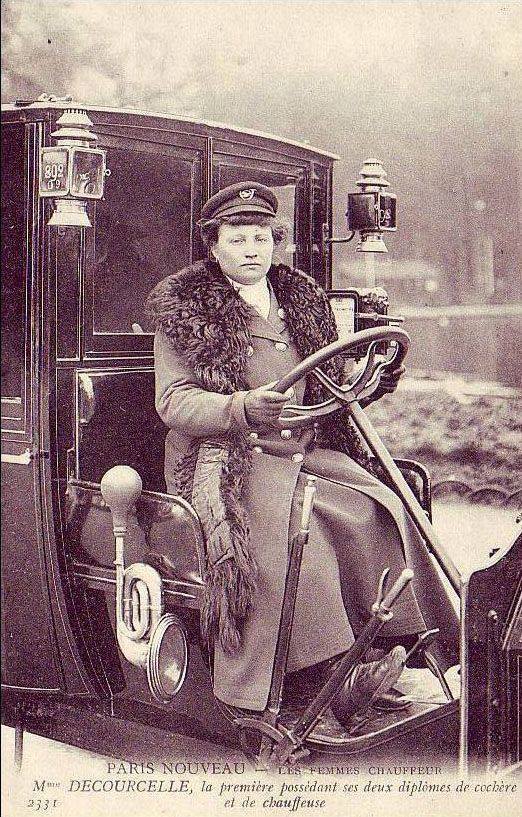

If you can read this, you likely know the French word for a professional automobile driver – “chauffeur.” In French, nouns come in masculine and feminine varieties, and the “-eur” ending indicates a masculine form. So, what do we call a woman who works behind the wheel? The natural option, “chauffeuse,” is already taken by a kind of fireside lounge chair. While the search for the right term reflects the scarcity of the concept, it also reveals a historical milestone.
In early 20th-century Paris, driving wasn’t considered a feminine occupation. The history-making moment arrived when the first women obtained their taxi licenses. Madame Inès Decourcelle is believed to be the first woman to receive her full taxi license in April 1908. She earned the title of the first “femme chauffeur,” sparking a debate among contemporaries about who held the prestigious title first.


One commenter suggested that the confusion around the first female taxi driver in Paris arose from the transition from licensed horse-drawn to motor cab drivers. While the debate continues, Madame Decourcelle’s accomplishment as the first woman to obtain diplomas as both a horse “cochère” and a motor “chauffeuse” remains a remarkable feat.
Related content:
Beautiful, Color Photographs of Paris Taken 100 Years Ago—at the Beginning of World War I & the End of La Belle Époque
Paris Had a Moving Sidewalk in 1900, and a Thomas Edison Film Captured It in Action
The Timeless Beauty of the Citroën DS, the Car Mythologized by Roland Barthes (1957)
Take a Virtual Drive through London, Tokyo, Los Angeles & 45 Other World Cities
Robert De Niro’s Taxi Cab License Used to Prepare for Taxi Driver (1976)
Based in Seoul,Colin M a rshall writes and broadcasts on cities, language, and culture. His projects include the Substack newsletterBooks on Cities and the book The Stateless City: a Walk through 21st-Century Los Angeles. Follow him on Twitter at @colinm a rshall or on Facebook.



